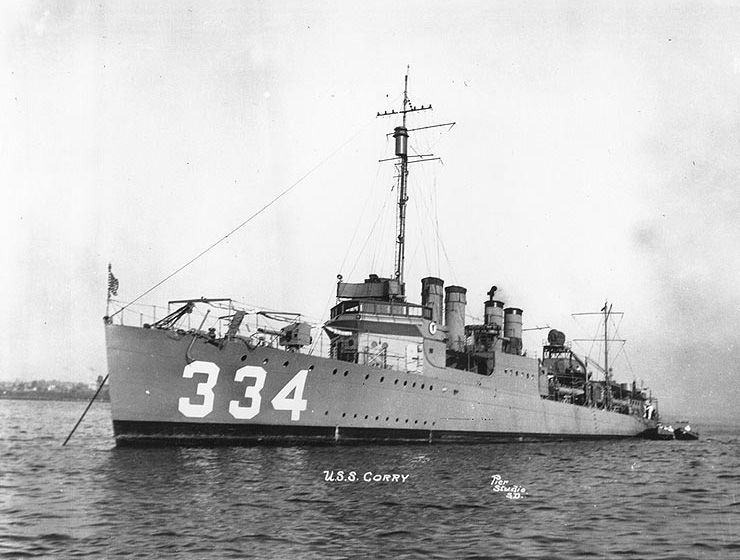 |
| Franklin D. Roosevelt in 1913 as Assistant Secretary of the Navy. |
Over the years US Navy ships served until they became obsolete or were no longer needed. Most were sent to the scrapyard, but others managed to hang on in reserve fleets or were re-purposed for other uses. Some of these ships were historically significant, while others reflected a technology that had long faded into obsolescence. For instance during the Spanish-American War, the navy reactivated several Civil War-era monitors that managed to survive for nearly forty years in reserve, then sent them to the scrapyard shortly thereafter.
 |
| The Civil War-era monitor Montauk, reactivated for the Spanish-American War. |
But public sentiment for naval relics can be strong, and this was particularly so in the forty years after the Spanish-American War. The rise of American naval power at the Battle of Manila Bay and the Battle of Santiago captured the public's imagination, and a 'Dewey Club' emerged: politically connected people who wished to commemorate those events. Among the members of the Dewey Club was Franklin D. Roosevelt.
 |
| USS Oregon loaned to her name state as a memorial in the 1920s. |
The advent of the Great Depression plunged the country into economic chaos, and although funds became scarce, the desire to preserve the historic relics still remained strong. A week prior to the Election of 1932, the National Capital Planning Commission, a government agency that oversaw urban planning for the capital, proposed creating a naval museum to showcase significant relics still in the fleet. The commission was led by Frederic Adrian Roosevelt, President Roosevelt's uncle. This proposed museum would evolve to become the Naval Historical Museum and FDR enthusiastically embraced the concept.
 |
| Artist concept of the Naval Historical Museum, Washington D.C. |
Throughout the 1930s President Roosevelt worked with several groups and individuals, to bring the Naval Historical Museum to reality. The economy restricted available funds for the construction of the museum, but efforts continued. In 1939 Admiral William Rodgers met with Roosevelt to discuss preserving historic relics still in the navy's inventory. Proposals for a museum site were made, including Hains Point (across the Potomac from today's Reagan National Airport). One plan had Olympia preserved in concrete, and USS Hartford was moved from Charleston to Washington D.C. in 1938, in preparation for her inclusion to the museum.
By the late 1930s, the indisputably historic ships Constitution, Constellation, Hartford, Olympia, and Oregon were still on the navy rolls. Several other Steel Navy ships also existed. Among them were:
- Rochester (formerly Saratoga, formerly New York). Admiral Sampson's flagship during the Battle of Santiago.
- Baltimore. One of the first steel ships of the New Navy. Converted to a receiving ship.
- Alton (formerly Chicago). One of the first steel ships of the New Navy. Converted to a receiving ship.
- Boston (later renamed Despatch). One of the first steel ships of the New Navy. Converted to a receiving ship.
- Illinois (later renamed Prairie State). Predreadnought battleship. Converted to a floating armory.
- Kearsarge (later renamed Crane Ship No. 1). Predreadnought battleship. Converted to floating crane ship.
 |
| Ex-Boston at Mare Island. She was scuttled off San Francisco in 1946. |
As the war began to shift in favor of the Allies, the need for a museum became more urgent. The Naval Historical Foundation wrote a letter to Roosevelt in June 1944 stating that the war was going to produce a flood of historically significant artifacts that needed to be preserved in the museum. The following month, Admiral Wilson Brown sent a letter and sketches of the museum to the Chief Bureau of Yards and Docks. By this time the plan was to construct the museum on the Potomac, just east of Theodore Roosevelt Island, which would house Olympia, Hartford, Constellation, and a World War One-era four-stack destroyer. An Annapolis graduate was selected to run the museum and the Chiefs of the Bureaus at the Navy Department were designated to be museum trustees.
In April 1945 Olympia was put in a drydock for an overhaul and preparation for inclusion in the museum. It looked as if all of the things were falling into place for the museum to come to fruition. Then on 12 April, President Roosevelt died. The shock to the nation was severe, especially as the Allies were on the cusp of victory. And as Roosevelt died, so did the reality of bringing the Naval Historical Museum to fruition. Without his endorsement and support, the idea of the museum faded away.
 |
| Constellation undergoing evaluation in 1946, to determine the feasibility of preservation. |
- IX-13 Hartford
- IX-15 Prairie State (formerly the battleship Illinois)
- IX-20 Constellation
- IX-21 Constitution
- IX-22 Oregon
- IX-25 Reina Mercedes
- IX-40 Olympia
By the late 1950s the navy finally managed to discard their remaining relic ships. Prairie State and Reina Mercedes were scrapped in 1956 and 1957 respectively. Hartford sank at her berth in 1956 due to a lack of maintenance, and dismantled the following year. Oregon, stripped to her weather deck during the war, went to a scrapyard in Japan in 1956.
 |
| Hulk of Hartford in 1957, after sinking at her moorings |
The successor of the National Naval Museum, the National Museum of the United States Navy, was established in 1961 and eventually saw the creation of branch museums across the United States. In addition to a wide collection of artifacts, the National Museum of the U.S. Navy does have one ship, USS Barry, available for visitors. One can only wonder what might have been, had FDR's dream of a grand and glorious naval museum come to fruition.











































